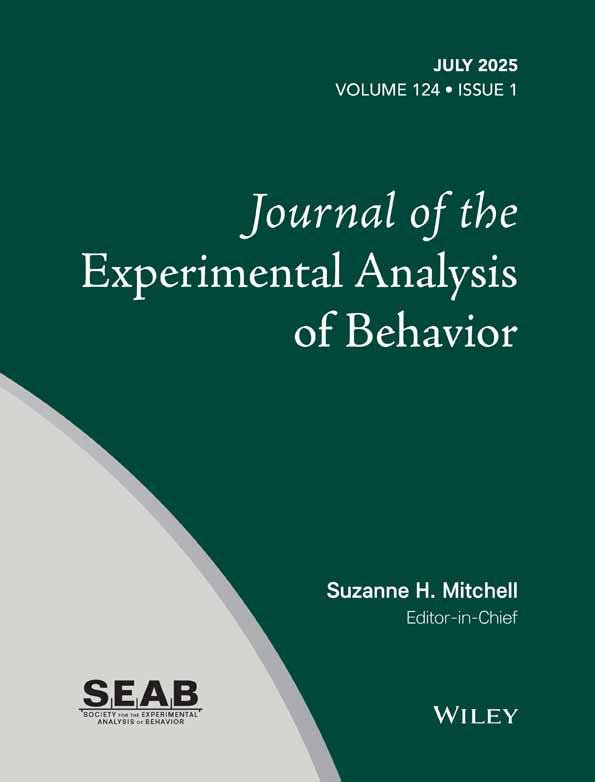THE DEVELOPMENT OF STIMULUS CONTROL WITH AND WITHOUT A LIGHTED KEY1
This research was supported by Grant APA 297 from the National Research Council of Canada to Robert L. Rudolph.
Abstract
In two experiments, the effect of an illuminated response key on the acquisition of stimulus control by an airflow stimulus was assessed. In the first experiment, pigeons were given nondifferential training with airflow emerging from behind the response key in one of three conditions of illumination: trained to peck a lighted key, trained to peck an unlighted key with a houselight present, trained to peck a key in total darkness. After 10 days of training on a variable-interval schedule of reinforcement, all subjects were given a generalization test on airflow velocity. The gradients for subjects trained in the dark were sharp, while those for subjects trained in lighted conditions were shallow. In the second experiment, the effect of an irrelevant keylight on the acquisition of an airflow velocity discrimination was assessed. Two groups of pigeons were trained to discriminate two airflow velocities. One group was trained with a lighted response key and the other was trained to peck the response key in total darkness. The dark-trained subjects acquired the discrimination more rapidly. The results demonstrate that the acquisition of stimulus control by airflow with either a differential or nondifferential training procedure can be overshadowed by keylight.




